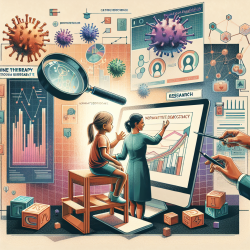The importance of physical activity for maintaining health cannot be overstated, yet midlife immigrant women face unique challenges that impede their participation in such activities. A recent systematic review titled "Factors Influencing Physical Activity Participation among Midlife Immigrant Women: A Systematic Review" sheds light on these challenges and offers insights into how practitioners can better support this demographic.
The Barriers to Physical Activity
The review identifies several barriers that midlife immigrant women encounter:
- Lack of Time: Many women are overwhelmed by household responsibilities and work obligations, leaving little time for exercise.
- Health Status: Poor physical or mental health can deter participation in physical activities.
- Lack of Motivation: Fatigue and lack of confidence are common deterrents.
- Lack of Proficiency in Life Skills: Language barriers and limited knowledge about physical activity can prevent engagement.
The Role of Family and Community
The review highlights the significant impact of familial and community factors:
- Familial Support: Encouragement from family members can significantly boost participation rates.
- Seasonality: Family obligations during holiday seasons can disrupt regular activity routines.
- Social Support: Community networks and exercise buddies can provide the necessary motivation and support.
Culturally Sensitive Interventions
The review suggests several adaptations to make physical activity interventions more effective for midlife immigrant women:
- Language Accommodation: Providing materials and instructions in participants' native languages is crucial.
- Adjustments in Intensity and Duration: Tailoring exercise programs to individual needs can enhance participation.
- Logistical Adjustments: Offering childcare services or transportation vouchers can remove significant barriers.
The Way Forward for Practitioners
This comprehensive review provides valuable insights for healthcare professionals and community stakeholders looking to design effective interventions. By understanding the unique barriers faced by midlife immigrant women, practitioners can develop tailored strategies that promote sustained physical activity participation, ultimately improving health outcomes for this underserved population.
If you're a practitioner looking to enhance your approach, consider these findings as a foundation for developing culturally sensitive programs that address the specific needs of midlife immigrant women. Engage with community leaders, involve family members, and ensure that language is not a barrier to participation. These steps are vital in creating an inclusive environment that encourages active lifestyles.










